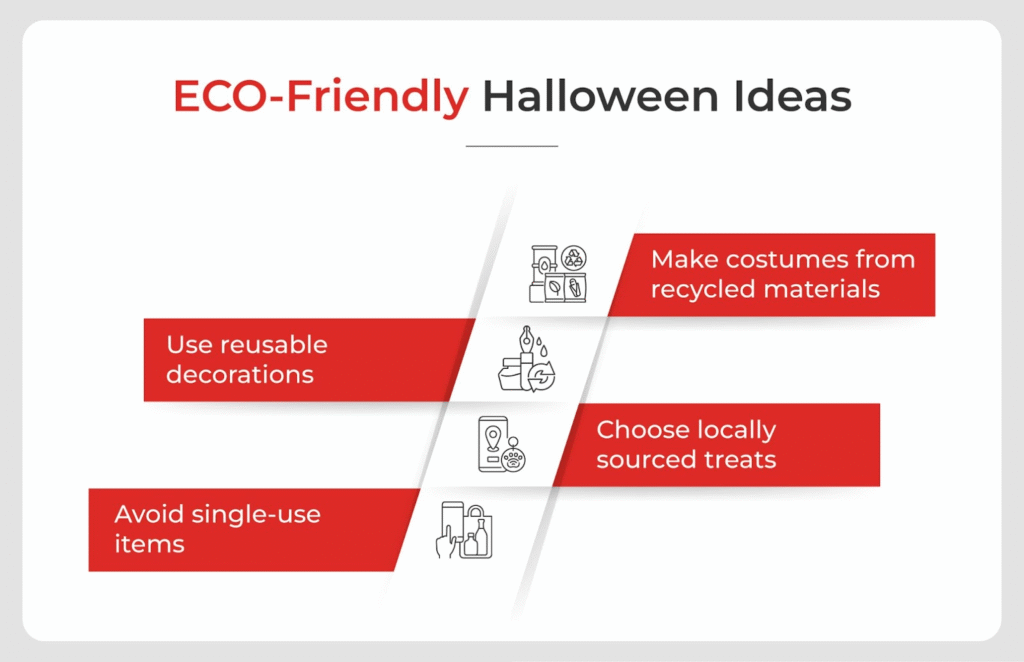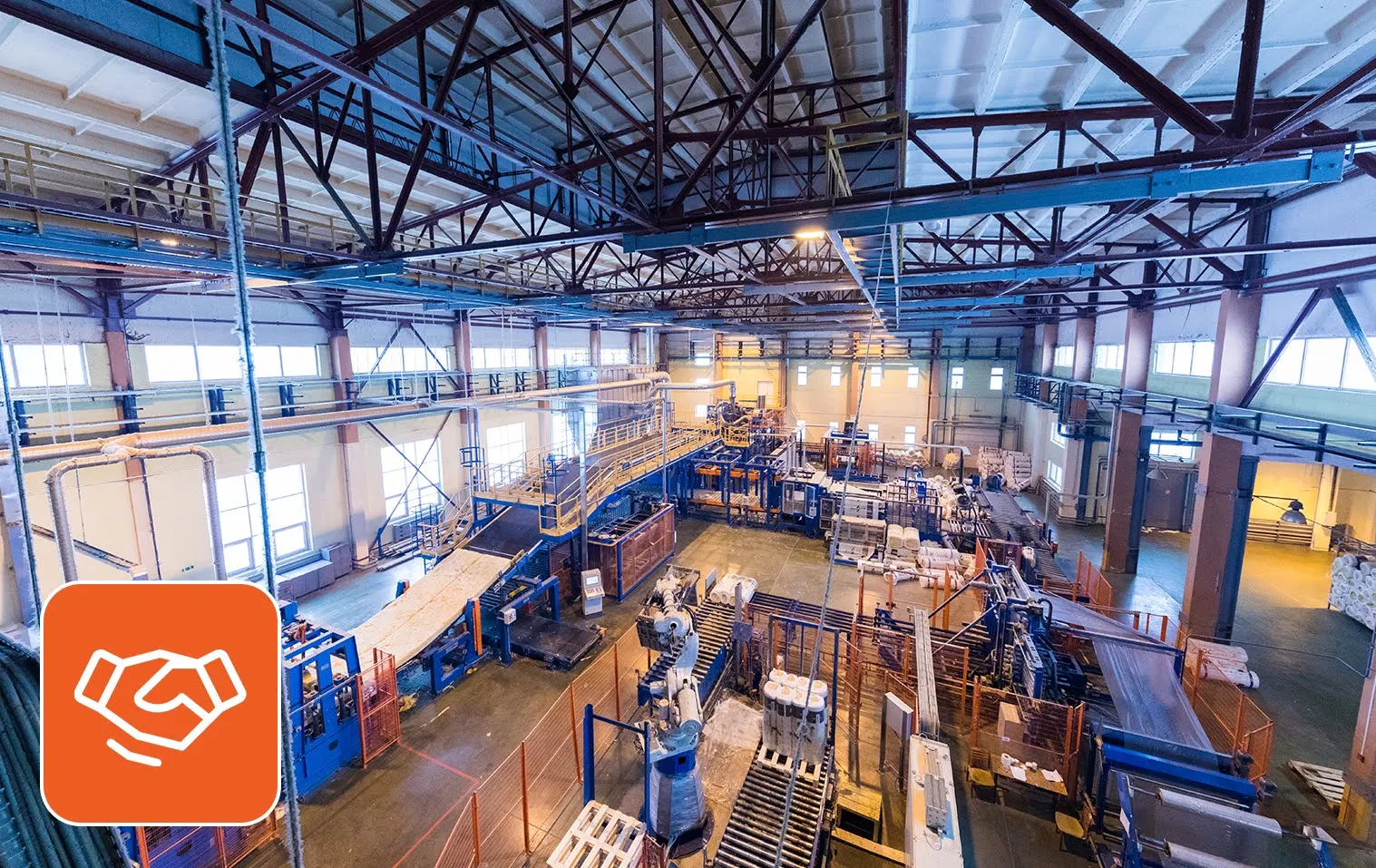When companies talk about sustainability, it usually happens in boardrooms or ESG reports. But seasonal events, like Halloween, can be great opportunities to turn ideas into action. Consider this: Costumes, plastic décor, single-use packaging, and office celebrations add up to a surprising environmental footprint. But these celebratory moments can be powerful entry points for sustainable business practices, a way to align corporate sustainability initiatives with culture, branding, and employee engagement.
If you think “Halloween” sounds too trivial for serious HR and business strategy, think of it this way: the micro reflects the macro. How a company handles something as seemingly small as Halloween decorations is often a mirror of how seriously it treats its sustainability commitments year-round.
From Seasonal Gestures to Green Business Strategy
Halloween is built on transformation: masks, costumes, reinvention. In business, that metaphor fits. Seasonal initiatives give leaders a chance to transform sustainability from policy into practice.
Take workplace sustainability initiatives. Replacing disposable décor with reusable assets or running a contest for costumes made from recycled materials seems minor. But these choices send a clear message: we live the values we claim to hold. Employees who see sustainability modeled in tangible ways are more likely to buy into broader corporate sustainability initiatives.
That’s why green business is not just energy audits or solar panels. A true green business strategy connects everyday behavior with long-term viability. Even small symbolic actions, like sustainable Halloween ideas in the office, are micro-touchpoints of culture that reinforce the larger system of sustainable business practices.
Patagonia’s famous “Don’t Buy This Jacket” campaign is a striking example. It represented a commitment to product longevity and recycling embedded deep in the company’s operations. The lesson? Employees and customers don’t judge sustainability by annual reports; they judge it by lived actions and bold, consistent choices.
Also Read: What One Small Business Is Doing For Sustainability
The Benefits of Going Green for a Business
For HR and talent leaders, the question is how to make sustainability matter in a measurable way. The benefits of going green for a business are increasingly tied to talent outcomes.
- Attracting top talent: Younger generations, particularly Gen Z, see sustainability as a baseline expectation. A company without a visible commitment risks losing credibility.
- Retention and morale: The benefits of green business practices include reducing “value dissonance.” Employees want to feel their employer’s values align with their own.
- Innovation driver: Constraints push creativity. Asking teams to come up with eco-friendly Halloween concepts for an office event, for example, can spark the same problem-solving mindset needed in product design or operations.
In essence, sustainability becomes a training ground for the kind of agile, values-driven thinking businesses need in fast-changing markets.
Halloween Sustainability Tips and How Businesses Can Be More Sustainable
The HR leader’s role is to model sustainable business practices with examples that employees can replicate. Here’s where seasonal events again become useful testbeds. An environmental NGO study found 83% of Halloween costumes are made from non-recyclable oil-based plastics, translating to roughly 2,000 tonnes of plastic waste annually, with many worn only once. Below are some ways to lead with action:
- Replace single-use décor with shared assets that are stored and reused annually.
- Organize contests for sustainable Halloween initiatives, such as the best upcycled costume.
- Source snacks and giveaways from local vendors practicing responsible business practices.
On a broader scale, how can businesses be more sustainable without overwhelming budgets? The key is integration. Embedding sustainability practices in business means tying them into existing processes rather than layering them on top. For instance:
- Performance reviews can include sustainability contributions.
- Procurement policies can prioritize vendors with verifiable green credentials.
- Leadership development can include sustainability literacy.
These are business sustainability practices that move the needle on both brand reputation and operational resilience.

The Strategic Importance of Environmental Sustainability
For HR executives, it’s important to remember that environmental sustainability in business is not a siloed function. It touches everything from workforce planning to employer branding.
Why is it important to go green? Because resilience is now a competitive differentiator. Global supply chain shocks, tightening regulations, and investor scrutiny mean that the importance of sustainability in business is now about survival.
Think of it like cardiovascular health. You can ignore it while focusing on performance metrics like speed or strength, but without it, the entire system collapses under stress.
To Conclude
Let’s return to Halloween. Offering Halloween sustainability tips or experimenting with eco-friendly Halloween practices is far more than saving a handful of pumpkins from the landfill. It’s about creating a symbolic anchor for employees and customers alike. It’s a chance to show that sustainability is systemic.
For HR and talent leaders, here’s the additional layer of insight: sustainable business practices examples drawn from cultural events are often the most relatable. They bridge the gap between corporate policy and daily behavior. They create stories employees retell: “Remember when we made costumes from recycled materials?”. And those stories reinforce identity.
If you want to future-proof your organization, don’t just ask how to make your business more sustainable. Ask instead: How can we make sustainability lived, felt, and celebrated, season after season?
At SPECTRAFORCE, sustainability is part of how we operate. Through our social responsibility initiatives and partnerships with organizations like Ecovadis, we actively reduce our carbon footprint, support local communities, and create meaningful work opportunities.
Ready to make sustainability a strategic advantage? Partner with SPECTRAFORCE to build an agile, values-driven workforce.
FAQs
Examples of corporate sustainability initiatives include reducing energy consumption in offices, adopting sustainable supply chain policies, creating employee engagement sustainability programs, and introducing workplace sustainability initiatives such as waste segregation or green commuting incentives.
Businesses can promote sustainability during Halloween by encouraging eco-friendly practices, such as using reusable decorations, sourcing locally made treats, hosting contests for sustainable Halloween ideas, and incorporating environmental awareness into employee celebrations.
The benefits of going green for a business include lowering costs through efficiency, enhancing employee morale, strengthening compliance readiness, and creating a competitive advantage by aligning with the values of modern consumers and talent pools.
Workplace sustainability initiatives can improve employee engagement by giving employees opportunities to actively participate in shared goals, making sustainability tangible, and fostering a culture where company values are experienced daily, not just written in policy documents.



